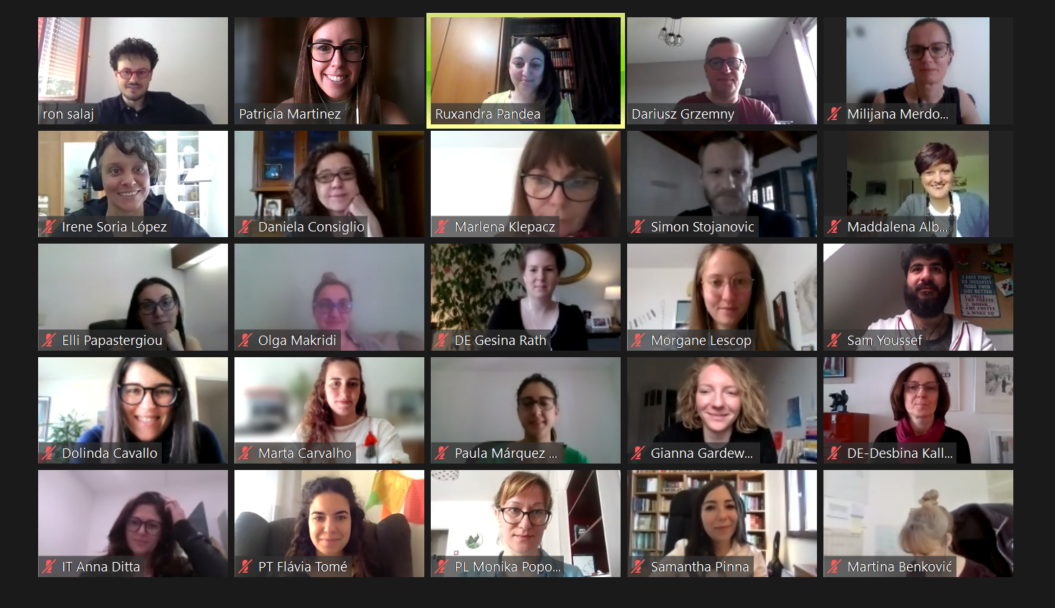
EPIC International training on media
Communicating human rights-based narratives against hate speech
According to ECRI’s, hate speech is based on the unjustified assumption that a person or a group of persons are superior to others; it incites acts of violence or discrimination, thus undermining respect for minority groups and damaging social cohesion1. Hate speech goes beyond the freedom of expression because it poses a human right violation.
While hate speech may be an ancient phenomenon, the role of social networks in contemporary society seems to have exacerbated this problem. In particular, the anonymity it offers allows those who want to spread hate proliferation and cloaked manifestations of discriminatory discursive practices to do so with impunity. The role of digital media as a vehicle for indoctrination, radicalisation, for shaming, and discrimination has revolutionised the way we experience politics and public debates.
Since 2015, coinciding with the peak of the “so-called” migration crisis, we have witnessed a mushrooming of blatantly offensive and openly discriminatory blogs and web pages, as well as the expansion of other web platforms where hate messages are spread, spanning from music videos to online gaming hidden messages2.
The process of “othering” specific groups has developed to feature offensive, aggressive and hostile discourses toward individuals and groups or perceived groups based on projected features or characteristics. This has highlights novel forms of xenophobic and discriminatory discursive practice aimed at new and old targets3.
Educating people, providing tools and raising awareness of the dangerous consequences of hate speech are essential approaches in tackling this problem.
With that ambitious goal in mind, EPIC partners gathered in May 2021 and embarked on an intense 4-day online training. The experts Ron Salaj, Dariusz Grzemny and Ruxandra Pandea guided their understanding of hate speech, its different definitions, causes and consequences, as well as how to counterbalance hate speech messages and campaigns by building counter or alternative narratives based on a human rights approach.
But let’s start from the beginning: what is a narrative and why does it matter? A story, a context, a way of communicating a message, were some of the answers given by the partners to this question. In a more precise way, a narrative can be defined as
a logical, internally coherent report and interpretation of connected events and characters. The report and interpretation combined gives meaning to the story, connecting singular happenings to a more general, collective story.
Therefore, a narrative is more than a story. It is a whole framework, a combination of a structure, characters, a given context (cultural, social or historical), relationship between those characters and a meaning, which connect all those individual elements to a bigger picture or collective story.
Image 1. Expert Ron Salaj explaining the key elements of a narrative with an example during the training
And narratives matter because they influence the way people think and can thus lead to certain actions. For instance, if people are led to think a certain group in society is threatening, they will tend to support security measures to prevent that group from harming them4.
Hate speech can be triggered by political interests, lack of empathy, fear, uninformed opinion, brainwashing, low self-esteem, anger, and sadness. To dismantle such a complex issue it is important to understand what its roots are, and the overall framework around it.
After listening to lectures on the causes and consequences of hate speech, human rights standards, and how to find the, sometimes, thin line between freedom of expression and hate speech, EPIC partners started to do their own simulation activity to build counter and alternative narratives.
This enriching experience is only the beginning of a one-year communication campaign with the objective of communicating at local level, in the territories covered by EPC, new narratives.
Eight local campaigns will aim to promote unbiased, balanced and evidence-based reporting on migration, addressing the concerns and doubts of some citizens, while highlighting the benefits of local integration, building positive narratives and counteracting negative stereotypes towards migrants communities.
Image 2. Some of the EPIC partners during one of the sessions of the training
1ECRI General Policy Recommendation number 15 https://www.coe.int/en/web/european-commission-against-racism-and-intolerance/recommendation-no.15
2Léonard, Kaunert, and Kaunert, Refugees, Security and the European Union
3Baumgarten, ‘Othering Practice in a far-right Extremist Online Forum’; Lazaridis, Campani, and Benveniste, The Rise of the Far Right in Europe; Lazaridis, Campani, and Benveniste
4Council of Europe (2017). WE CAN!, Taking action against hate speech through counter and alternative narratives. Available online at http://www.coe.int/en/web/no-hate-campaign/we-can-alternatives